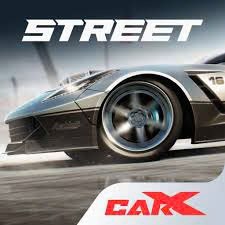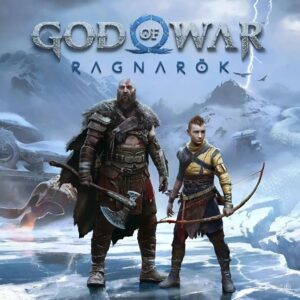Zombie Apocalypse Review: How ‘Marvel Zombies’ Squanders the Potential of the MCU’s Next Generation
Popular Now
 Gacha Club
Gacha Club
 Candy Crush Saga
Candy Crush Saga
 God of War Ragnarök
God of War Ragnarök
 Auto X Drift Racing 3
Auto X Drift Racing 3
 Toca Boca World
Toca Boca World
 Brawl Stars
Brawl Stars
 PUBG Mobile
PUBG Mobile
 Among Us
Among Us
 Minecraft
Minecraft
 Black Myth: Wukong
Black Myth: Wukong  The highly anticipated animated series, “Marvel Zombies,” promised a blood-soaked, irreverent take on the MCU’s established universe, delivering a mature, horror-tinged narrative free from the constraints of the Sacred Timeline. While the show certainly provides a chaotic cascade of gore and inventive zombie mayhem—turning beloved heroes into monstrous threats—it falls short of its potential, particularly in its handling of the most exciting new arrivals: the burgeoning team often speculated to be the foundation of the Young Avengers. This creative misstep constitutes a significant missed opportunity, deflating the momentum the Marvel Cinematic Universe has been painstakingly building for its Phase 5 and beyond roster.
The highly anticipated animated series, “Marvel Zombies,” promised a blood-soaked, irreverent take on the MCU’s established universe, delivering a mature, horror-tinged narrative free from the constraints of the Sacred Timeline. While the show certainly provides a chaotic cascade of gore and inventive zombie mayhem—turning beloved heroes into monstrous threats—it falls short of its potential, particularly in its handling of the most exciting new arrivals: the burgeoning team often speculated to be the foundation of the Young Avengers. This creative misstep constitutes a significant missed opportunity, deflating the momentum the Marvel Cinematic Universe has been painstakingly building for its Phase 5 and beyond roster.
The series, picking up years after the events of the “What If…?” episode, centers on a core group of survivors. The trio of Kamala Khan (Ms. Marvel), Kate Bishop (Hawkeye), and Riri Williams (Ironheart) are immediately compelling. Their dynamic, forged in the fires of a global catastrophe, offers a fresh, relatable counterpoint to the cosmic stakes. For a fleeting moment, “Marvel Zombies” becomes the unintended pilot for the Young Avengers live-action team-up fans have been clamoring for, showcasing their chemistry, intelligence, and survival instincts.
The emotional core of the series lies in this nascent friendship, but its impact is brutally, and somewhat carelessly, truncated.
The Wasted Potential of a Star-Powered Trio
The decision to feature Ms. Marvel, Kate Bishop, and Ironheart as the main protagonists in the initial episodes was an intelligent strategy—it capitalizes on the massive goodwill and CPC-driving interest surrounding these three characters. Their appearance, voiced by their mainline MCU actors, Hailee Steinfeld, Dominique Thorne, and Iman Vellani, lent the animated series a layer of authenticity and consequence. However, the show’s rushed pacing and short episode count ultimately betray this promising setup.
- Kamala Khan/Ms. Marvel: Iman Vellani brings the necessary heart and idealism to the post-apocalyptic world. Her Embiggening powers are cleverly utilized in combat, but her role often feels more reactive than central, despite technically being the main point-of-view character. The emotional weight of her losses is meant to anchor the story, but the narrative sprints past these crucial moments.
- Kate Bishop/Hawkeye: Hailee Steinfeld’s Kate is the pragmatic, grounded survivor, a perfect foil for Kamala’s optimism. Her resourcefulness and tactical knowledge shine, particularly in confronting her zombified mentor, Clint Barton (Hawkeye). Yet, her screen time, and the development of her relationship with Riri and Kamala, is agonizingly brief before the plot dictates a major, unceremonious departure.
- Riri Williams/Ironheart: Riri’s genius-level intellect is the group’s best asset, providing both tech and scientific hope in a hopeless world. However, like Kate, she is a casualty of the show’s need for shock value and rapid plot progression. Her potential arc—evolving her Ironheart suit to counter supernatural and zombified threats—is tragically cut short, a sacrifice on the altar of a bleak narrative that feels more interested in destruction than deep character payoff.
By effectively sidelining or removing two-thirds of this promising new-generation team early on, the series commits a structural failure. It confuses shock value with dramatic depth. For a team that represents the future of the Marvel Cinematic Universe, their abrupt arcs feel less like a dark, definitive statement and more like a narrative convenience to clear the board for the final, chaotic confrontation, which inevitably reverts to focusing on legacy characters like Blade (albeit “Blade Knight”), Shang-Chi, and a tragically underutilized Hulk/Infinity Stone MacGuffin.
 The Strategic Error in Rushing the Apocalypse
The Strategic Error in Rushing the Apocalypse
The core issue is that “Marvel Zombies” operates on a fundamental misconception: that four half-hour episodes are enough to explore an apocalyptic world, introduce new character dynamics, pay tribute to established lore, and deliver a satisfying conclusion. This pacing issue is detrimental to audience engagement and squanders valuable intellectual property for the long-term MCU strategy.
The show needed more time to breathe, to allow the genuine bond between Kamala, Kate, and Riri to solidify. The emotional impact of their split, and the subsequent psychological strain on Kamala, is diluted because the audience barely had enough time to invest in their functional, compelling unit. This wasted opportunity doesn’t just hurt “Marvel Zombies”; it arguably impacts the hype surrounding the eventual Young Avengers debut in the mainline MCU. Fans expected to see these characters thrive in a non-canon setting, proving their worth. Instead, they were used as high-profile cannon fodder.
Missed Opportunities for High-Value Narrative Payoffs
Beyond the core trio, the series introduces and quickly discards several other compelling elements that held high potential and high-value keywords:
- Blade’s Debut & The Moon Knight Fusion: The character of “Blade Knight”—a fusion of the vampire hunter and Moon Knight’s mantle—is a fascinating concept. Yet, it feels more like a creative necessity due to production delays on the live-action Blade movie than a fully integrated character arc. The complexity of the Moon Knight mythology and Khonshu’s involvement is hinted at but never satisfyingly explored, reducing the Daywalker to a powerful but narratively shallow survivor.
- The Scarlet Witch ‘Red Queen’ Threat: Wanda Maximoff, the zombified ‘Queen of the Dead,’ is terrifying, but the series continues the MCU trend of making her the ultimate final boss. This reuse of the Scarlet Witch as a corrupted force feels tired, especially after Doctor Strange in the Multiverse of Madness. It detracts from the true horror of the zombie plague, which is supposed to be random and indiscriminate, not controlled by a familiar, overpowered antagonist.
- Cosmic-Level Zombie Mayhem: The brief glimpses of zombified Eternals (Ikaris), Namor’s Talokanil forces, and the involvement of the Nova Corps tease a cosmic scale that the four-episode format simply cannot sustain. The fate of Zombie Thanos is particularly underwhelming, a quick footnote in the larger, earthbound conflict.
In conclusion, “Marvel Zombies” is an undeniable visual spectacle, delivering on its promise of R-rated superhero horror. However, its true value was not in the sheer volume of hero deaths, but in the compelling new team it assembled: Ms. Marvel, Kate Bishop, and Ironheart. By rushing their story, sacrificing them for cheap thrills, and failing to fully commit to their centrality, the series wastes the most promising and high-SEO-value superhero team the MCU has been cultivating. It’s a fun, gruesome ride, but one that ultimately sells short the very future it attempts to showcase, leaving behind a trail of wasted potential and high return on investment opportunities.








 The Strategic Error in Rushing the Apocalypse
The Strategic Error in Rushing the Apocalypse